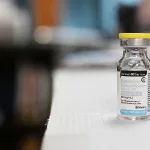Most people don’t realize that taking Rukobia can feel like walking a tightrope—one side is the hope of controlling a stubborn HIV strain, the other is a list of possible side effects that can make you pause. In the next few minutes we’ll walk through exactly what those side effects are, why they happen, and practical ways to manage them so you can stay focused on living, not just surviving.
Grab a cup of tea, settle in, and let’s chat about the real‑world experience of Rukobia. I promise to keep the medical jargon to a minimum and sprinkle in some friendly anecdotes along the way.
Quick Take Summary
- Most common effect: nausea (about 11 % of users).
- Typical mild symptoms: diarrhea, headache, dyspepsia, fatigue.
- Serious warnings: immune‑reconstitution inflammatory syndrome (IRIS), QTc prolongation (heart rhythm), liver‑enzyme spikes in hepatitis‑B/C co‑infection.
- Key interaction culprits: strong CYP3A inducers (rifampin, carbamazepine, St. John’s wort) and high‑dose estrogen birth‑control.
- When to call your provider: any new heart palpitations, severe vomiting, sudden fever, or allergic rash.
If those bullet points sound familiar, don’t worry—you’re not alone. Below we dive deeper.
Understanding Rukobia Dosage
What Is Rukobia?
Rukobia (generic name fostemsavir) is a gp120‑directed attachment inhibitor. Think of HIV as a lock and the virus’s gp120 protein as the key. Rukobia jams the lock, keeping the virus from opening the door to your immune cells. It’s a lifesaver for people whose HIV has become resistant to many other drugs.
Approved Use & Standard Dose
The official ViiV Healthcare prescribing information says the standard dose is one 600 mg extended‑release tablet taken twice daily, with or without food. Simplicity is the goal—just remember “morning and night.”
Why Dosage Matters for Side‑Effect Risk
Because Rukobia’s blood levels are tightly linked to the dose, taking it incorrectly can tip the balance. Too low → the virus may rebound; too high → nausea, dizziness, or even heart‑rhythm issues. This is why your doctor will double‑check any other medicines that speed up metabolism (the dreaded CYP3A inducers).
Common Mild Effects
Let’s start with what most people actually feel. The good news? Most of these symptoms are mild, predictable, and manageable.
| Side Effect | Frequency (BRIGHTE Study) | Typical Onset | Practical Management |
|---|---|---|---|
| Nausea | ≈ 11 % | 1‑2 weeks | Small, frequent meals; ginger tea; consider OTC anti‑emetic after consulting your provider. |
| Diarrhea | 4 % | 1‑3 weeks | Stay hydrated, BRAT diet (bananas, rice, applesauce, toast), loperamide if needed. |
| Headache | 4 % | Any time | Acetaminophen, regular sleep, limit caffeine. |
| Dyspepsia | 3 % | Early weeks | Avoid spicy/acidic foods, eat slower, try antacids. |
| Fatigue / Somnolence | 2‑4 % | Ongoing | Gentle exercise, balanced diet, steady sleep schedule. |
| Vomiting | 2 % | Early weeks | Pre‑dose anti‑emetic, sip water, call provider if persistent. |
Tips to Tame Each Symptom
- Nausea: keep a “chewy‑gum” kit on hand; the act of chewing can soothe the stomach.
- Diarrhea: a daily probiotic (like Lactobacillus) often helps restore gut balance.
- Headache: apply a cool compress to the forehead—instant relief.
- Dyspepsia: try sipping warm water with a pinch of baking soda (but not daily).
If any of these mild side effects linger beyond three weeks, give your clinician a quick call. Adjustments are usually easy.
Serious Red Flags
Now for the “watch‑out” signs. These are rarer, but they deserve instant attention.
Immune‑Reconstitution Inflammatory Syndrome (IRIS)
When your immune system finally gets a boost from Rukobia, it can overreact to hidden infections—think of it as a “fire alarm” that’s too sensitive. Symptoms include sudden fevers, swollen lymph nodes, or a flare‑up of an existing infection.
What to do: Call your provider right away. They may order labs or, in rare cases, pause the drug temporarily.
QTc Prolongation (Heart‑Rhythm Issue)
Rukobia can lengthen the QT interval on an ECG, especially in older adults or those already on other QT‑prolonging meds. You might feel dizziness, light‑headedness, or faint.
Management: Your doctor should get a baseline ECG before starting and repeat it periodically. If you notice palpitations, it’s better to be safe and get checked.
Liver‑Function Changes (HBV/HCV Co‑infection)
Patients with hepatitis B or C are more likely to see elevated liver enzymes while on Rukobia. This isn’t usually dangerous, but it signals that the liver is working harder.
Tip: Ask for liver‑function tests every 12 weeks. If they rise, your clinician may adjust the regimen or add liver‑protective measures.
Severe Allergic Reaction / Anaphylaxis
Rare, but possible: rash, swelling of face or throat, trouble breathing.
Action: Call 911 immediately. Prompt treatment can be lifesaving.
Red‑Flag Checklist
- New fever or chills after starting Rukobia
- Chest pain, fainting, or irregular heartbeat
- Severe, persistent vomiting or diarrhea
- Unexpected rash, swelling, or breathing difficulty
- Sudden increase in liver‑enzyme labs
Keep this list on your fridge or in a phone note—just in case.
Interactions & Precautions
Strong CYP3A Inducers
Drugs like rifampin (TB treatment), carbamazepine (seizure meds), phenytoin, and even St. John’s wort can speed up the breakdown of fostemsavir, lowering its effectiveness. If you’re on any of these, your doctor may need to choose a different regimen or closely monitor viral load.
Oral Contraceptives
Rukobia can increase levels of ethinyl estradiol, so only low‑dose pills (≤ 30 µg) are recommended. If you rely on hormonal birth control, double‑check the pill strength with your provider.
Other Notable Meds
- Enzalutamide (prostate cancer)
- Mitotane (adrenal cancer)
- Antifungals that are strong CYP3A inhibitors (ketoconazole, itraconazole) – they may raise Rukobia levels and increase side‑effect risk.
Interaction Table
| Drug/Class | Effect on Rukobia | Clinical Action |
|---|---|---|
| Rifampin, Carbamazepine, Phenytoin, St. John’s wort | ↓ Rukobia plasma concentration | Avoid or consider alternative HIV regimen |
| Ketoconazole, Itraconazole (strong CYP3A inhibitors) | ↑ Rukobia plasma concentration | Monitor for increased side effects; dose adjustment may be needed |
| Oral contraceptives >30 µg ethinyl estradiol | ↑ estrogen exposure | Switch to ≤30 µg formulation or use non‑hormonal contraception |
Managing Side Effects
When to Contact Your Provider (FAQ‑Style)
Q: “My nausea isn’t improving after five days—should I stop?”
A: Not yet. Try ginger tea, small meals, and an OTC anti‑emetic after your doctor’s ok. If nausea becomes severe (vomiting >2 times/day) call the clinic.
Q: “I felt my heart race after the morning dose.”
A: Sit down, breathe slowly, and check your pulse. If it stays above 100 bpm or you feel dizzy, seek urgent care—this could be early QTc prolongation.
Lifestyle & Supportive Measures
- Hydration: Aim for 2‑3 L of water daily; it helps with both nausea and kidney health.
- Nutrition: Bland, easy‑digest foods (plain toast, oatmeal) during the first two weeks.
- Sleep hygiene: Keep a consistent bedtime, limit screens an hour before sleep.
- Stress reduction: Gentle yoga or breathing exercises can calm both gut and heart.
7‑Day Side‑Effect Diary (Template)
| Day | Symptom(s) | Severity (1‑10) | What Helped? | Notes for Doctor |
|---|---|---|---|---|
| 1 | ||||
| 2 | ||||
| 3 | ||||
| 4 | ||||
| 5 | ||||
| 6 | ||||
| 7 |
Tracking helps you see patterns and gives your clinician concrete data—wins for both of you.
Real‑World Patient Stories
Maria’s Nausea Journey
Maria, a 38‑year‑old teacher from Ohio, started Rukobia after three prior regimen failures. “The first week was a swirl of morning nausea,” she recalls. She found that sipping ginger‑infused water before each dose and taking her tablet with a small cracker made the wave subside by week 3. “I felt like I finally had a treatment that actually worked,” she says, smiling.
John’s IRIS Episode
John, 52, had chronic hepatitis B alongside HIV. Two months into Rukobia, he developed a fever, swollen lymph nodes, and a painful rash—classic IRIS. His care team paused Rukobia, gave a short course of steroids, and monitored labs closely. Within three weeks his symptoms cleared and he resumed the medication at the same dose. “It was scary, but the doctors explained everything, and I never felt left in the dark,” he shares.
Lesson Learned
Both stories underline two key points: side effects are often manageable with simple tweaks, and staying in close contact with your healthcare team makes the difference between a bump and a roadblock.
Bottom Line Takeaway
Rukobia is a powerful ally for people living with multidrug‑resistant HIV, but like any potent medication, it carries a side‑effect profile that ranges from a mild tummy upset to rare, serious heart or immune reactions. The good news is that the majority of users experience only mild issues, and most serious risks can be caught early with routine monitoring and open communication.
Here’s a quick recap:
- Take the 600 mg tablet twice daily exactly as prescribed.
- Watch for the most common side effect—nausea**—and use simple home remedies.
- Know the red‑flag symptoms (heart palpitations, fever, rash) and call your provider ASAP.
- Check all your other meds for CYP3A interactions**; avoid strong inducers and high‑dose estrogen pills.
- Keep a daily diary; bring it to appointments.
Remember, you’re not navigating this alone. Your doctor, pharmacist, and the HIV community are all here to help you stay on track. If you have questions, doubts, or just need to vent about a side effect that’s driving you crazy, don’t hesitate to reach out. Sharing makes the journey lighter for everyone.
What’s your experience with Rukobia? Have you found a trick that eases nausea or a warning sign that saved you? Drop a comment below—let’s keep the conversation going.

















Leave a Reply
You must be logged in to post a comment.